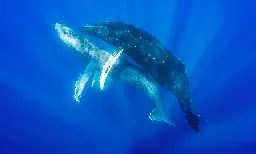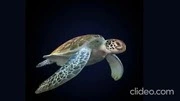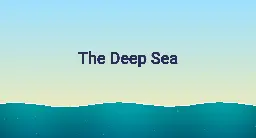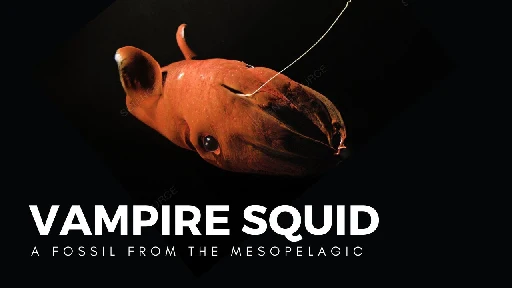The Deep Sea
- Dark oxygen made by deep sea 'batteries'www.bbc.co.uk Dark oxygen made by deep sea 'batteries'
The discovery that lumps of metal on the seafloor produce oxygen raises questions over plans to mine the deep ocean.

- Ancient Origins of the Vampire Squiddeepseanews.com Ancient Origins of the Vampire Squid
Delving into the evolutionary past of the enigmatic deep-sea vampire squid, Vampyroteuthis infernalis, has long been a pursuit shrouded in mystery. However, recent discoveries, such as a remarkable specimen unearthed from the Early Jurassic of Luxembourg, are shedding new light on the early anatomy

Delving into the evolutionary past of the enigmatic deep-sea vampire squid, Vampyroteuthis infernalis, has long been a pursuit shrouded in mystery. However, recent discoveries, such as a remarkable specimen unearthed from the Early Jurassic of Luxembourg, are shedding new light on the early anatomy of vampyromorphs.
Enter Simoniteuthis michaelyi, a newfound taxon that has captured the attention of researchers worldwide. This remarkable creature, based on a nearly complete pen accompanied by a head-arm complex, is a brilliantly preserved fossil.
What makes Simoniteuthis truly intriguing is its unusual arm crown, boasting only four arm pairs instead of the expected five. This anomaly challenges our understanding of vampyromorph anatomy.
But the surprises don’t end there. Examination of the specimen’s mouth region reveals evidence of predation on two bony fishes. The two animals died in the act of predation, i.e. one had caught the other and had begun to nibble on it, when they possibly sank into hypoxic waters and suffocated.
Unlike its modern descendant, Vampyroteuthis infernalis, Simoniteuthis inhabited shallower waters, reminiscent of Mesozoic vampyromorphs. This divergence in habitat and hunting behavior offers valuable insights into the evolutionary trajectory of these captivating creatures.
Through meticulous analysis of the fossil record, researchers speculate that vampyromorphs began a vertical migration into deeper waters, possibly driven by shifts in feeding behavior, as early as the Oligocene epoch.
Fuchs, Dirk, Robert Weis, and Ben Thuy. “Simoniteuthis, a new vampyromorph coleoid with prey in its arms from the Early Jurassic of Luxembourg.” Swiss Journal of Palaeontology 143.1 (2024): 1-10.
- A Florida man living underwater won’t resurface even after breaking the recordwww.seattletimes.com A Florida man living underwater won’t resurface even after breaking the record
A university professor broke a record for the longest time living underwater without depressurization this weekend at a Florida Keys lodge for scuba divers.
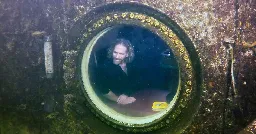
KEY LARGO, Fla. (AP) — A university professor broke a record for the longest time living underwater without depressurization this weekend at a Florida Keys lodge for scuba divers.
Joseph Dituri’s 74th day residing in Jules’ Undersea Lodge, situated at the bottom of a 30-foot-deep lagoon in Key Largo, wasn’t much different than his previous days there since he submerged March 1.
Dituri, who also goes by the moniker “Dr. Deep Sea,” ate a protein-heavy meal of eggs and salmon prepared using a microwave, exercised with resistance bands, did his daily pushups and took an hour-long nap. Unlike a submarine, the lodge does not use technology to adjust for the increased underwater pressure.
The previous record of 73 days, two hours and 34 minutes was set by two Tennessee professors — Bruce Cantrell and Jessica Fain — at the same location in 2014.
But Dituri isn’t just settling for the record and resurfacing: He plans to stay at the lodge until June 9, when he reaches 100 days and completes an underwater mission dubbed Project Neptune 100.
The mission combines medical and ocean research along with educational outreach and was organized by the Marine Resources Development Foundation, owner of the habitat.
“The record is a small bump and I really appreciate it,” said Dituri, a University of South Florida educator who holds a doctorate in biomedical engineering and is a retired U.S. Naval officer. “I’m honored to have it, but we still have more science to do.”
His research includes daily experiments in physiology to monitor how the human body responds to long-term exposure to extreme pressure.
“The idea here is to populate the world’s oceans, to take care of them by living in them and really treating them well,” Dituri said.
The outreach portion of Dituri’s mission includes conducting online classes and broadcast interviews from his digital studio beneath the sea. During the past 74 days, he has reached over 2,500 students through online classes in marine science and more with his regular biomedical engineering courses at the University of South Florida.
While he says he loves living under the ocean, there is one thing he really misses.
“The thing that I miss the most about being on the surface is literally the sun,” Dituri said. “The sun has been a major factor in my life – I usually go to the gym at five and then I come back out and watch the sunrise.”
- The Deep Sea Is Filled with Treasure, but It Comes at a Pricewww.newyorker.com The Deep Sea Is Filled with Treasure, but It Comes at a Price
We’ve barely explored the darkest realm of the ocean. With rare-metal mining on the rise, we’re already destroying it.
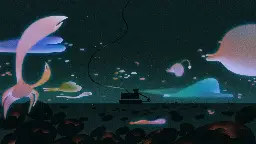
- Scientists provide first detailed estimates of how much sediment is supplied to coral islands from the reef systemphys.org Scientists provide first detailed estimates of how much sediment is supplied to coral islands from the reef system
Scientists have produced the first detailed estimates of how much sediment is transported onto the shores of coral reef islands, and how that might enable them to withstand the future threats posed by climate change.
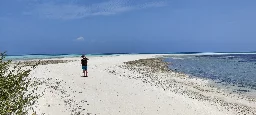
- These creatures of the 'twilight zone' are vital to our oceanswww.nationalgeographic.com These creatures of the 'twilight zone' are vital to our oceans
The species help harness carbon dioxide, a greenhouse gas, deep in the ocean, but much is still unknown about this region and its fascinating inhabitants.
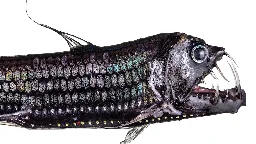
- Deepest Dive Under Antarctica Reveals a Shockingly Vibrant Worldwww.nationalgeographic.com Deepest Dive Under Antarctica Reveals a Shockingly Vibrant World
Our special report offers a rare look at life beneath the frozen continent—where penguins, seals, and exotic creatures thrive.
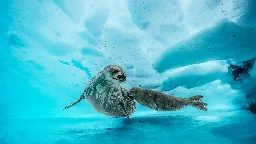
- Dive Below the Surface with the Stunning Images of the 2024 Underwater Photographer of the Year

https://www.thisiscolossal.com/2024/02/underwater-photographer-of-the-year/
- Oceans break heat records five years in a rowwww.nature.com Oceans break heat records five years in a row
The heat stored in the world’s oceans increased by the greatest margin ever in 2023.

- Impacts of Biomagnification on Aquatic Ecosystems - Mercurial Trendsmercurialtrends.com Impacts of Biomagnification on Aquatic Ecosystems - Mercurial Trends
Biomagnification pertains to the amplification of environmental contaminants as they traverse the trophic levels within these intricate food...
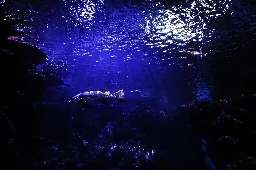
- Delightfully strange: Mystery 'golden egg' found on ocean floorphys.org Delightfully strange: Mystery 'golden egg' found on ocean floor
A golden egg, or an alien, on the bottom of the Pacific Ocean?
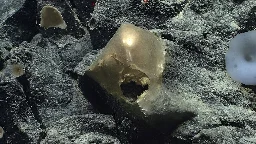
- A sea urchin: they are method actors, acting out The Waste Land | Helen Sullivanwww.theguardian.com A sea urchin: they are method actors, acting out The Waste Land | Helen Sullivan
Their five jaws are arranged in a shape Aristotle described as a ‘lantern’ but should have called a ‘horrible beak’

- Reef Sharks Are Disappearing Around the Worldwww.smithsonianmag.com Reef Sharks Are Disappearing Around the World
A massive new study found a staggering decline of these top predators, which help balance vulnerable coral reef ecosystems and their food chains
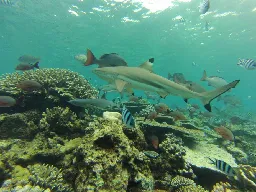
- Scientists reveal how deepest sea dwellers adapted to their environmentphys.org Scientists reveal how deepest sea dwellers adapted to their environment
A genetic analysis of the hadal snailfish, the deepest-dwelling known vertebrate species, has suggested a number of key adaptations that allow it to survive more than 6,000 meters under the sea.
- Deep Sea Hydrothermal Vents, or Black Smokers

Really interesting formations and lots of unique creatures live in this extreme environment
- Big Fin Squid Sighted by a Shell Oil ROV in 2007 in the Gulf of Mexico 1.5 Miles Below the Surface

Big Fin Squid can grow to about 20 feet long. There's a video of this sighting as well: https://www.youtube.com/watch?v=GSXqqi3ShOs
